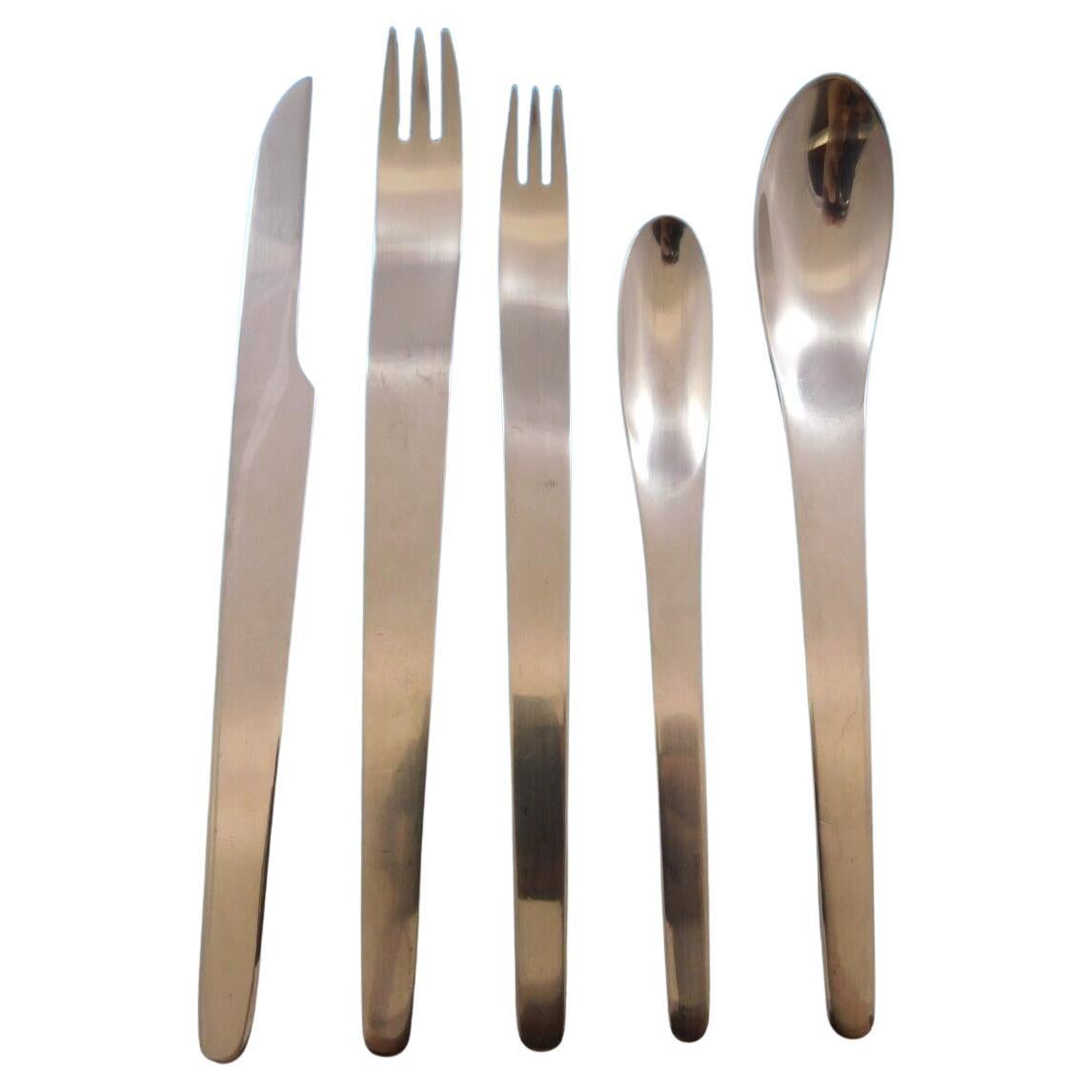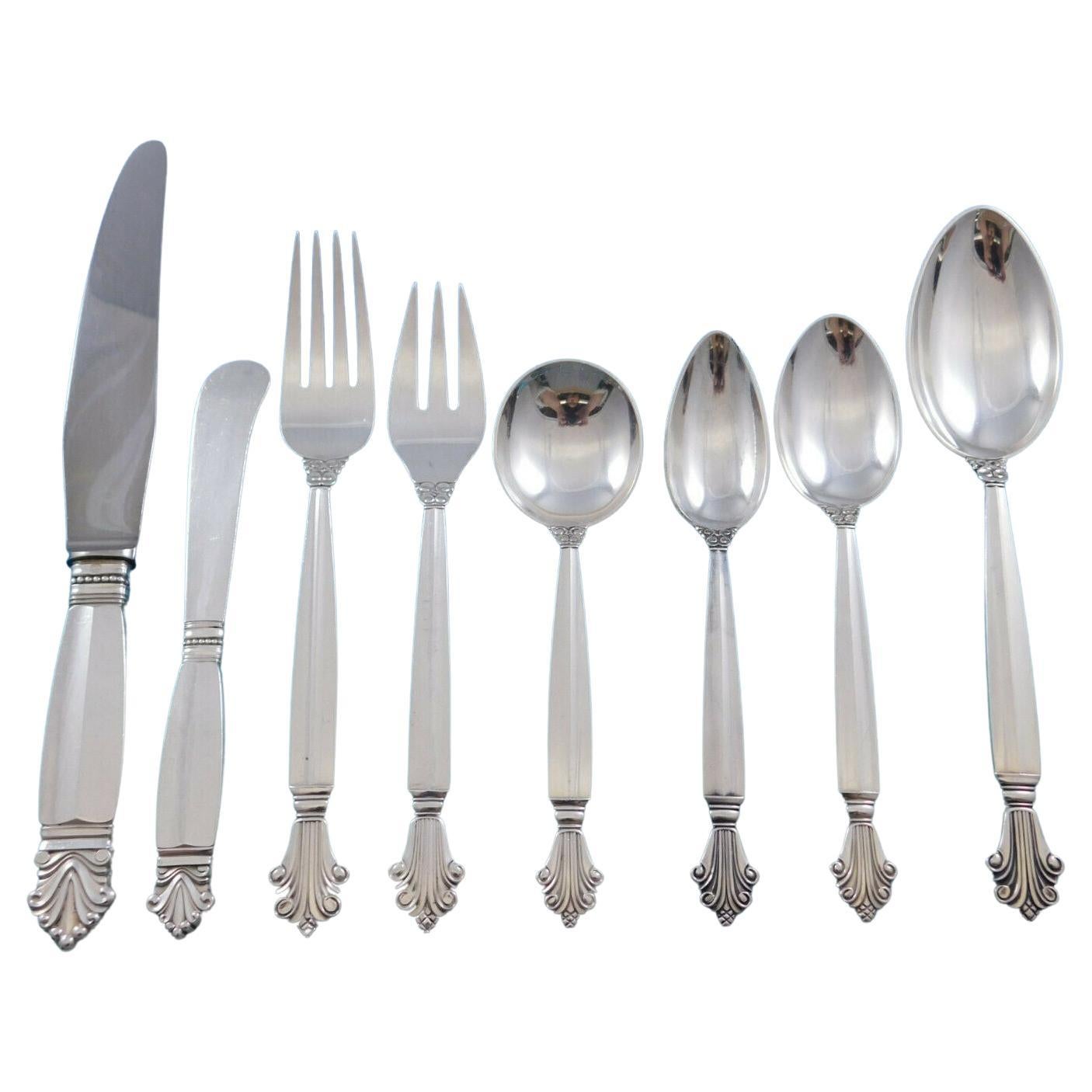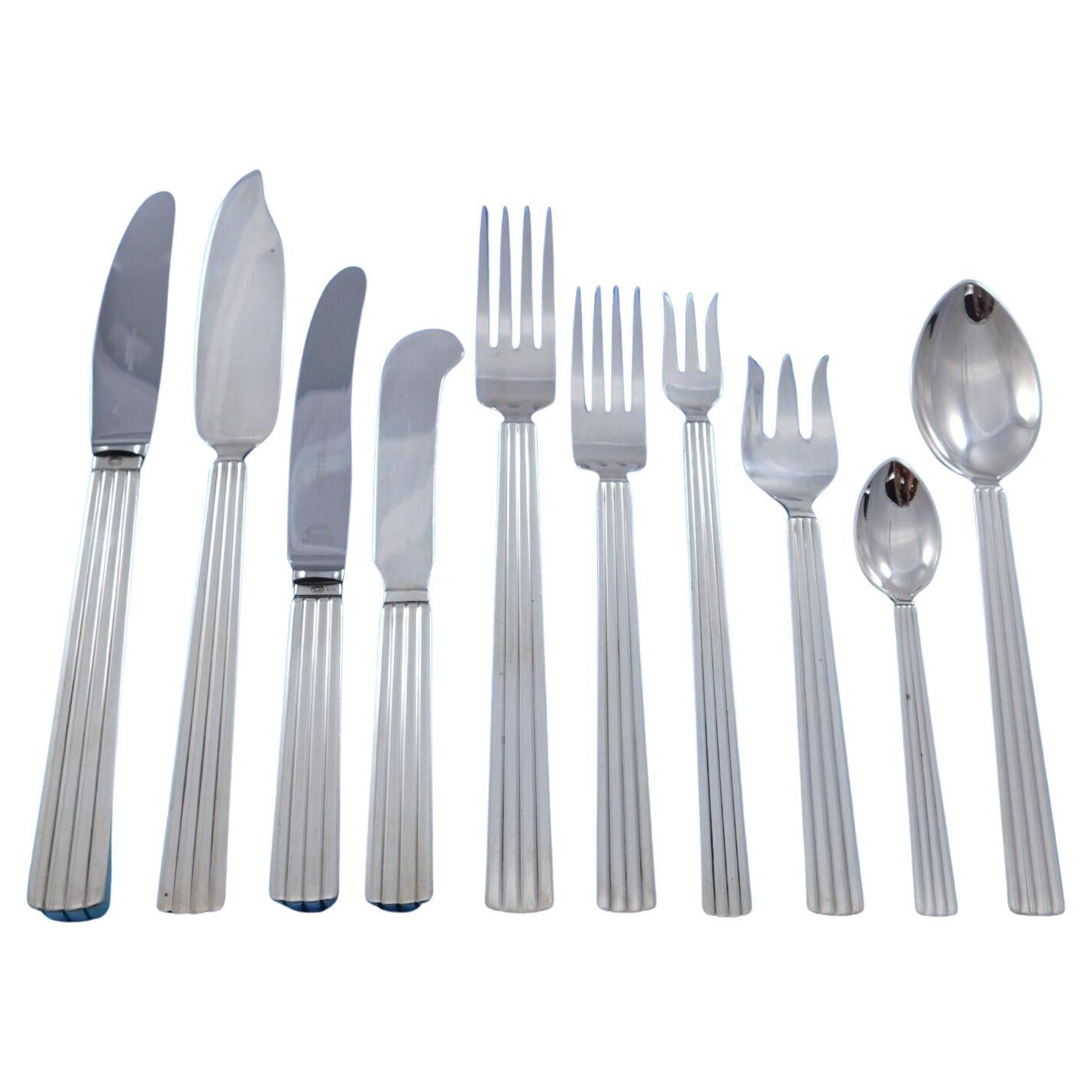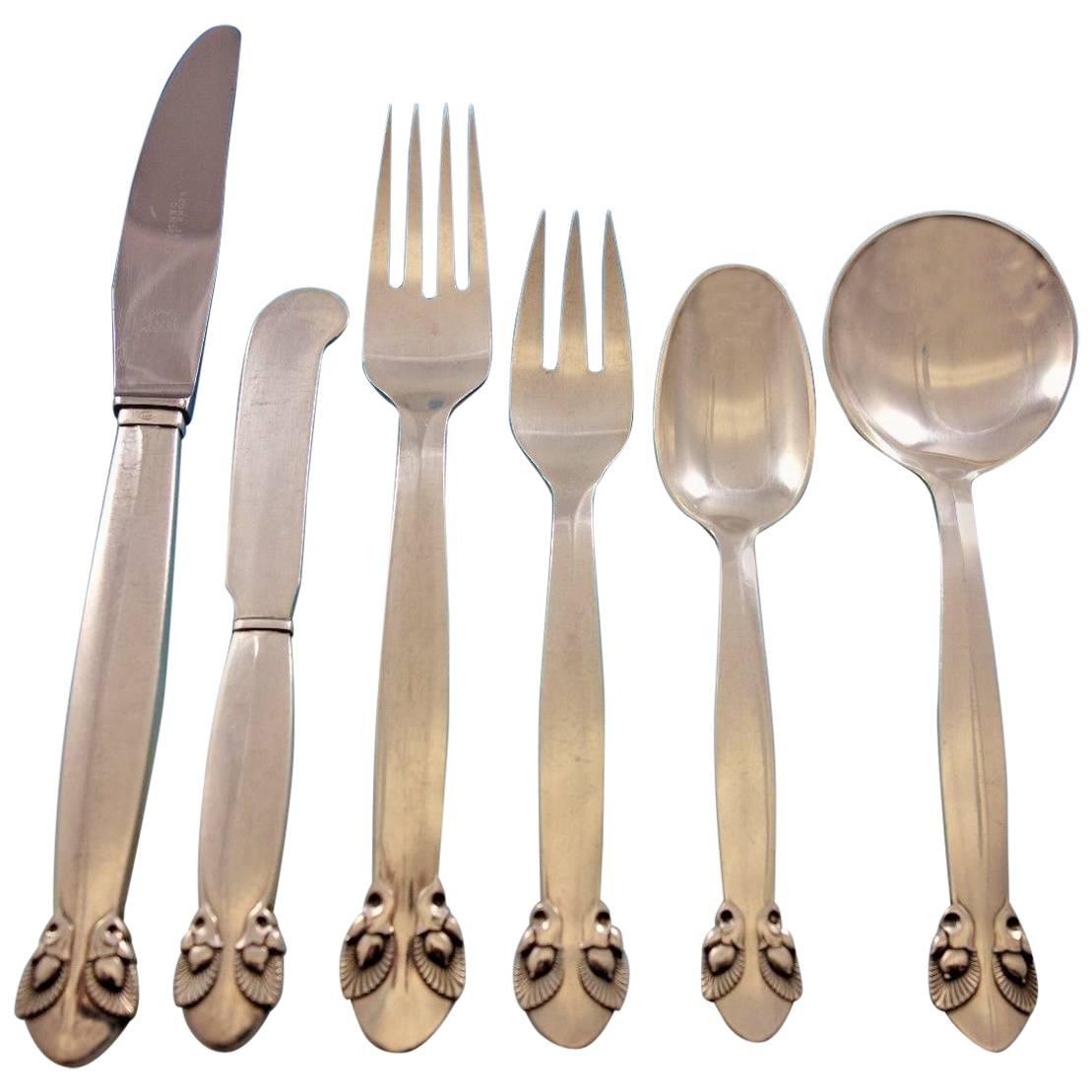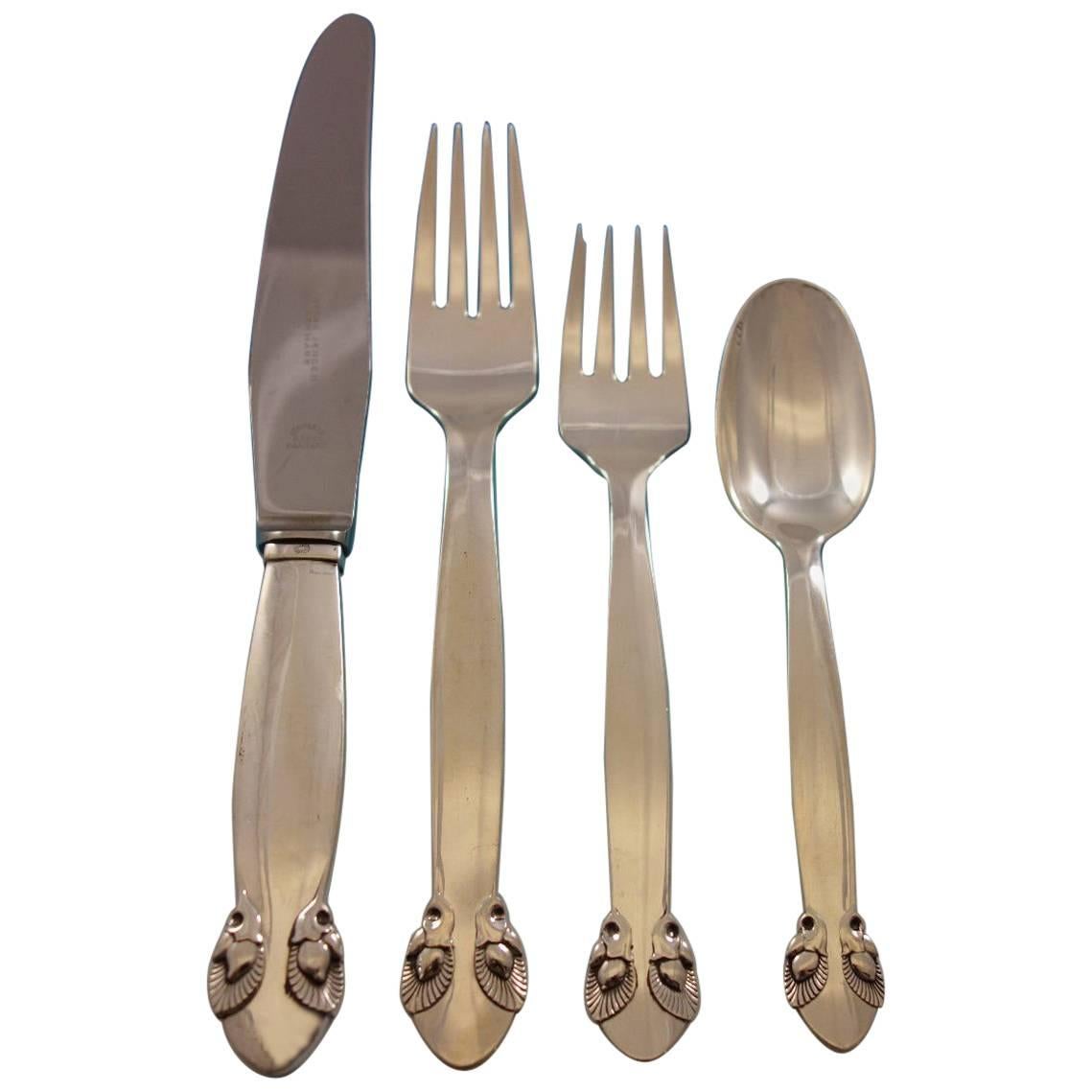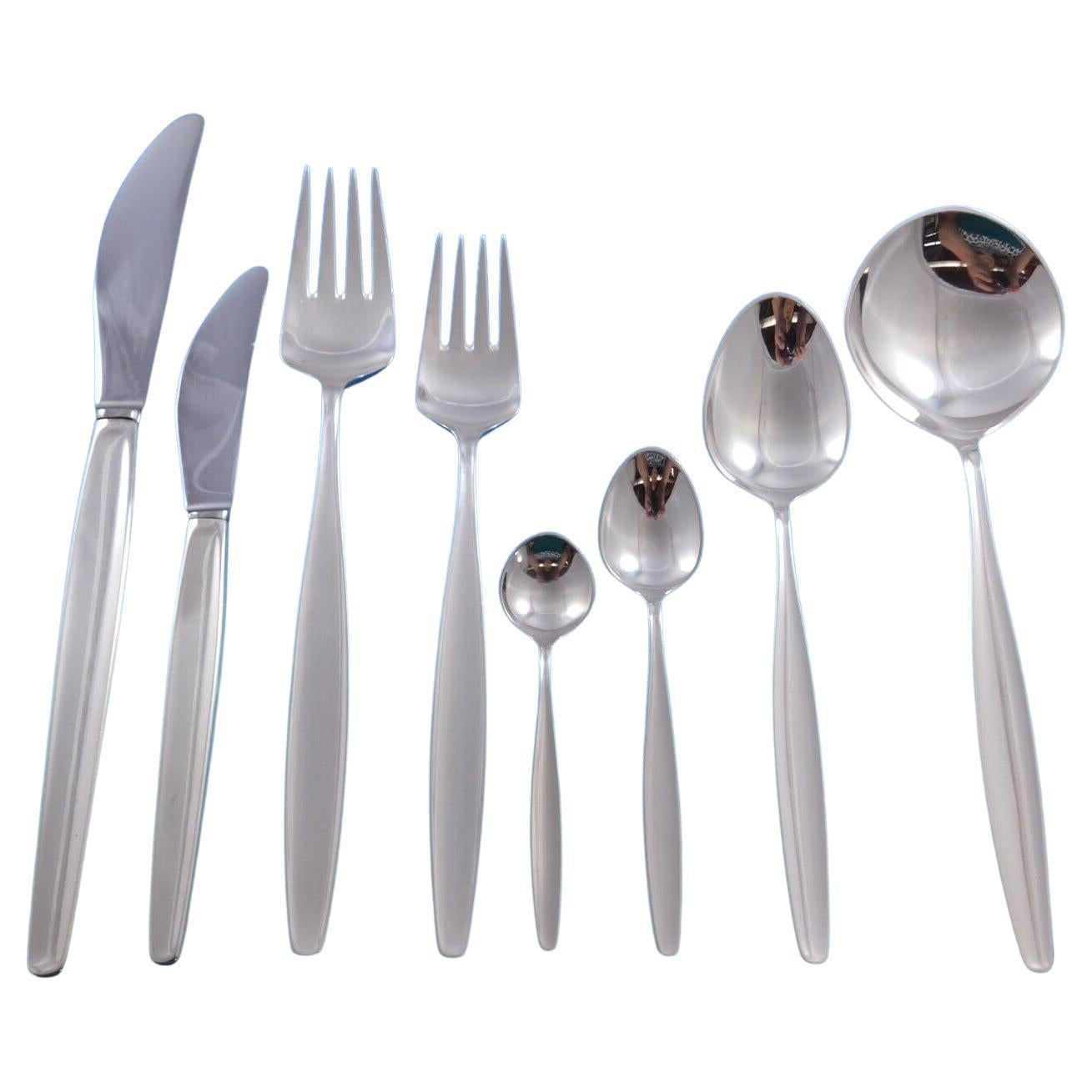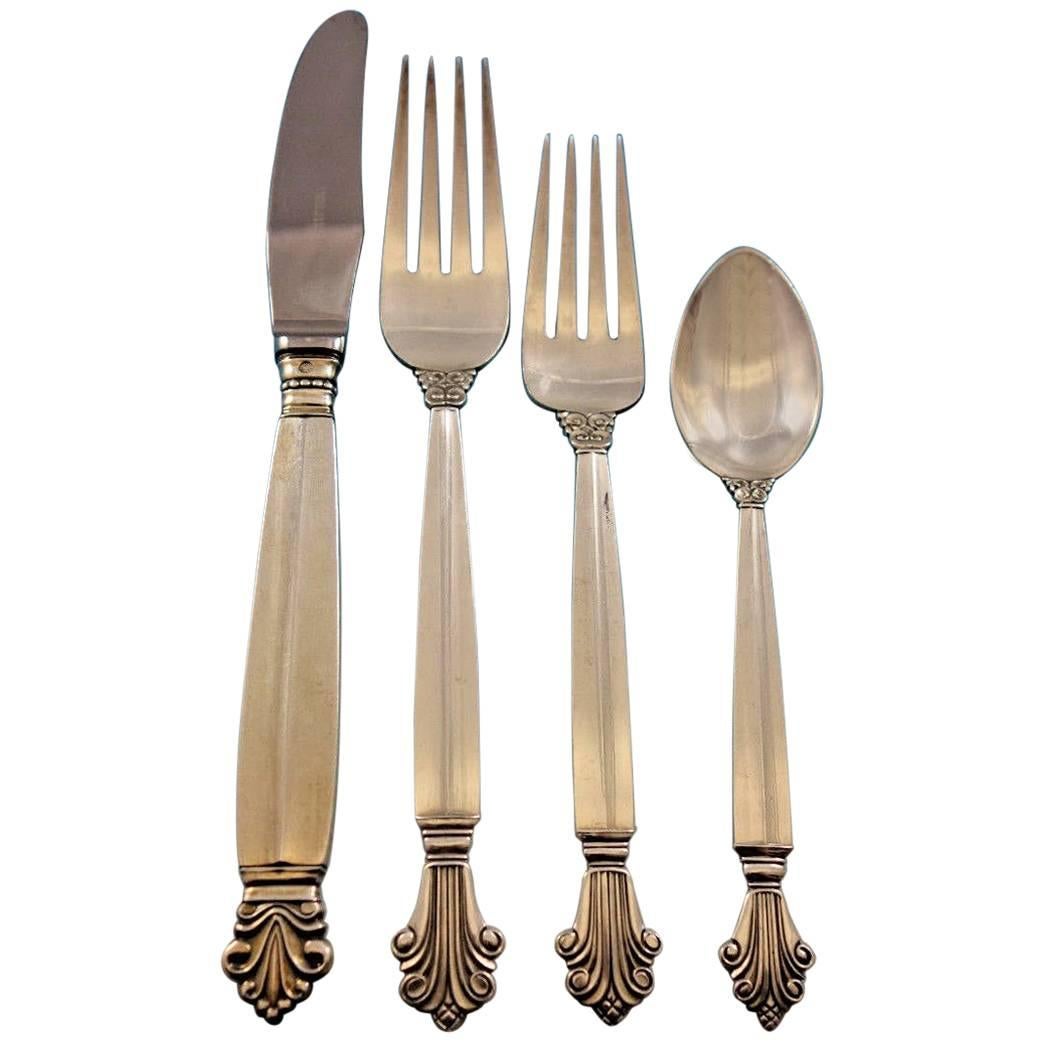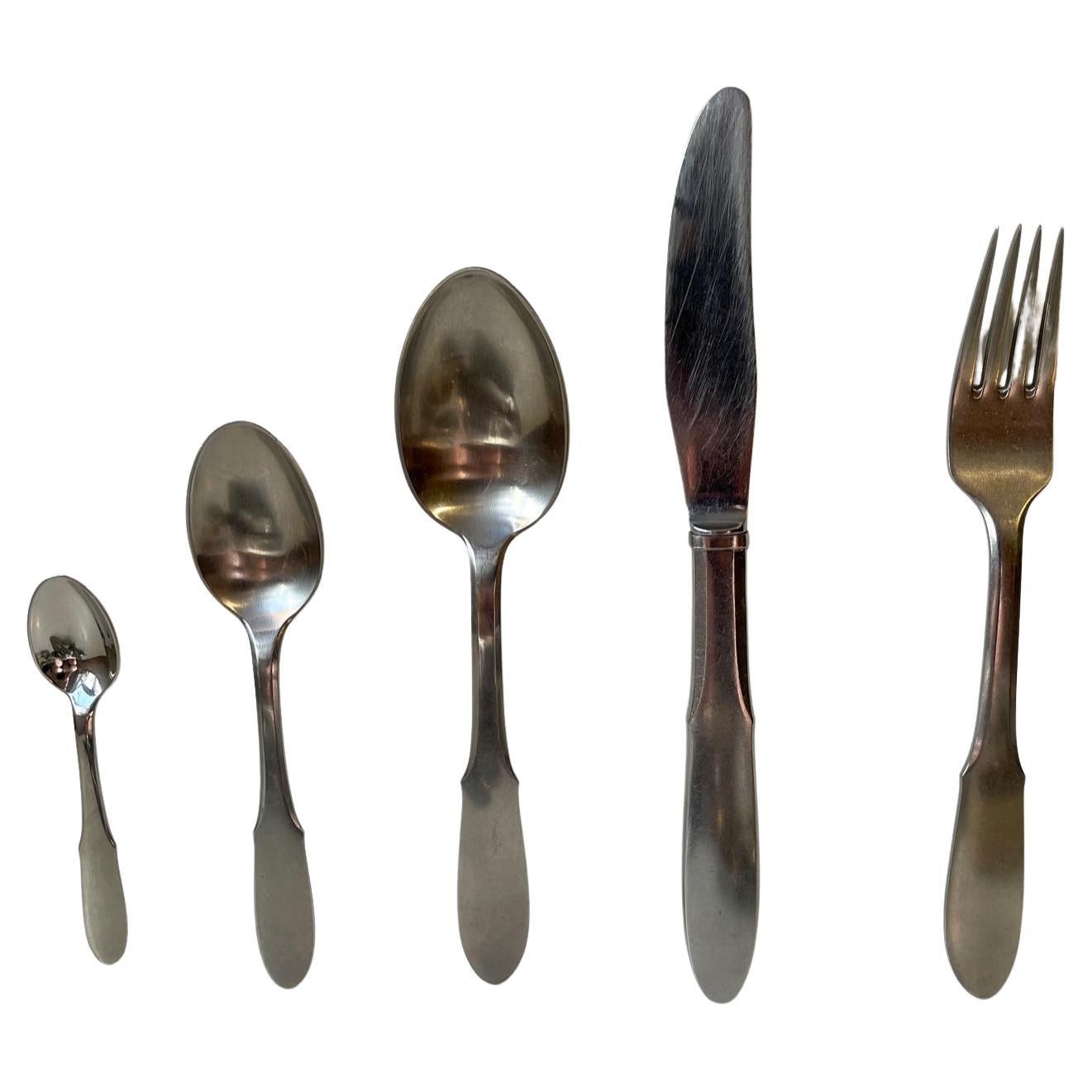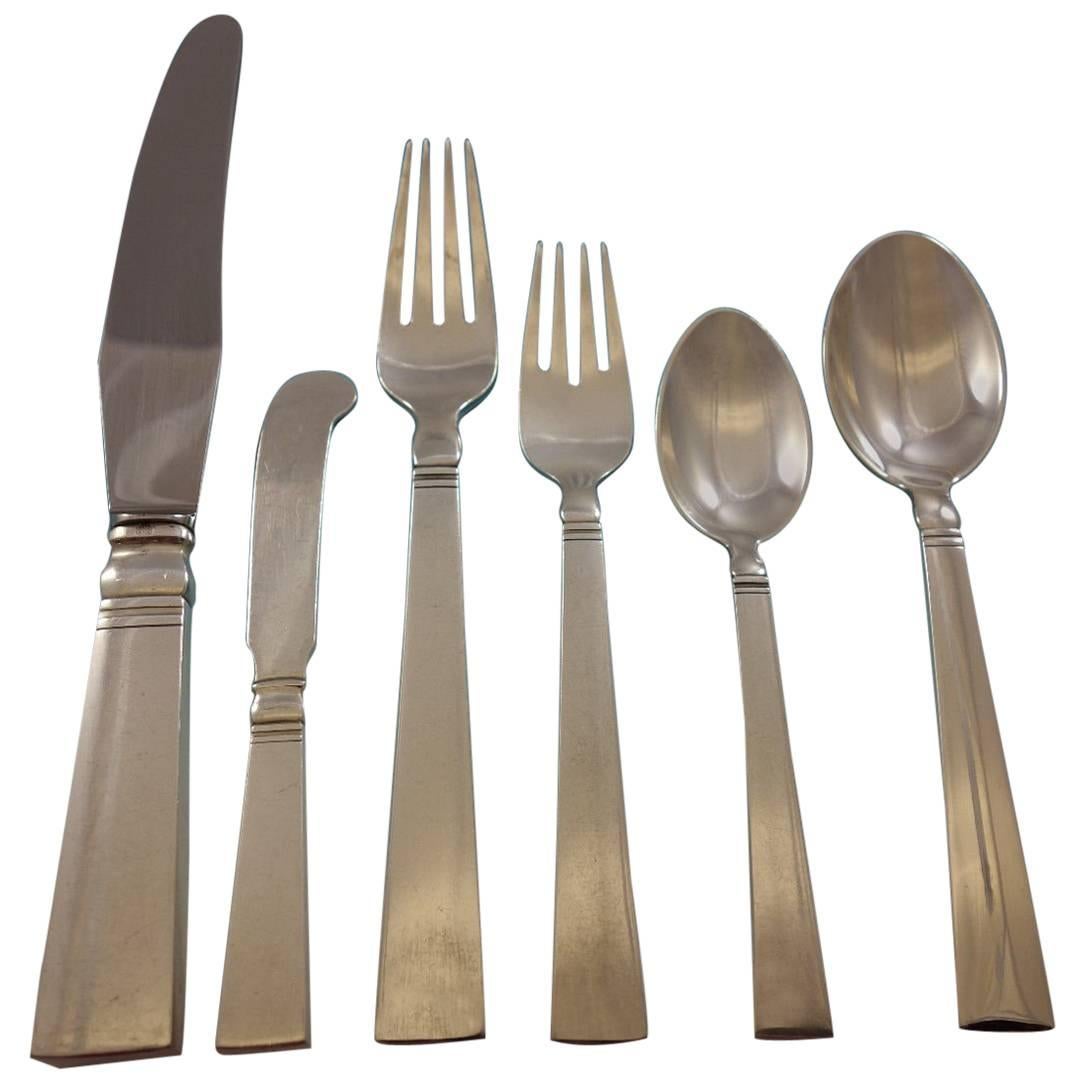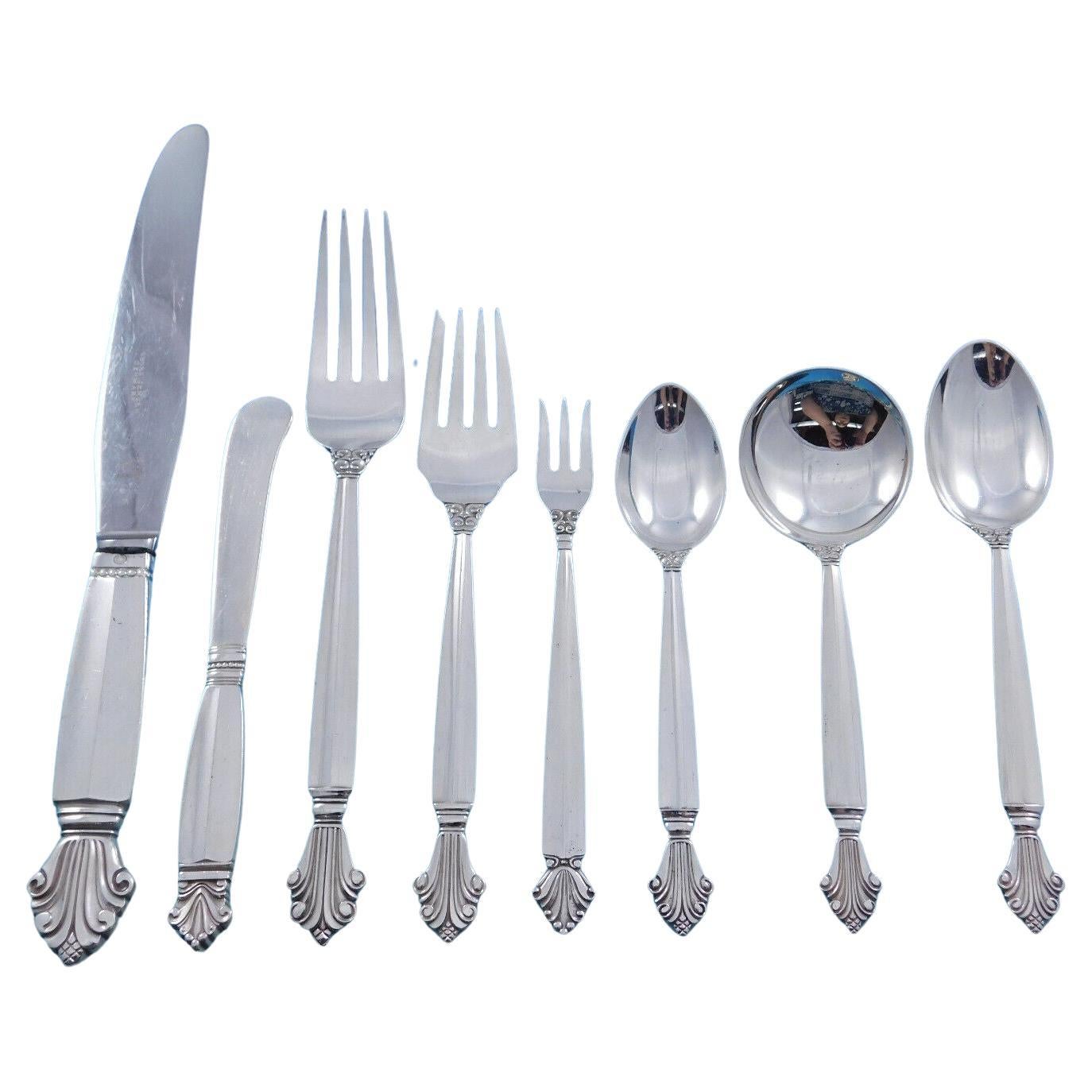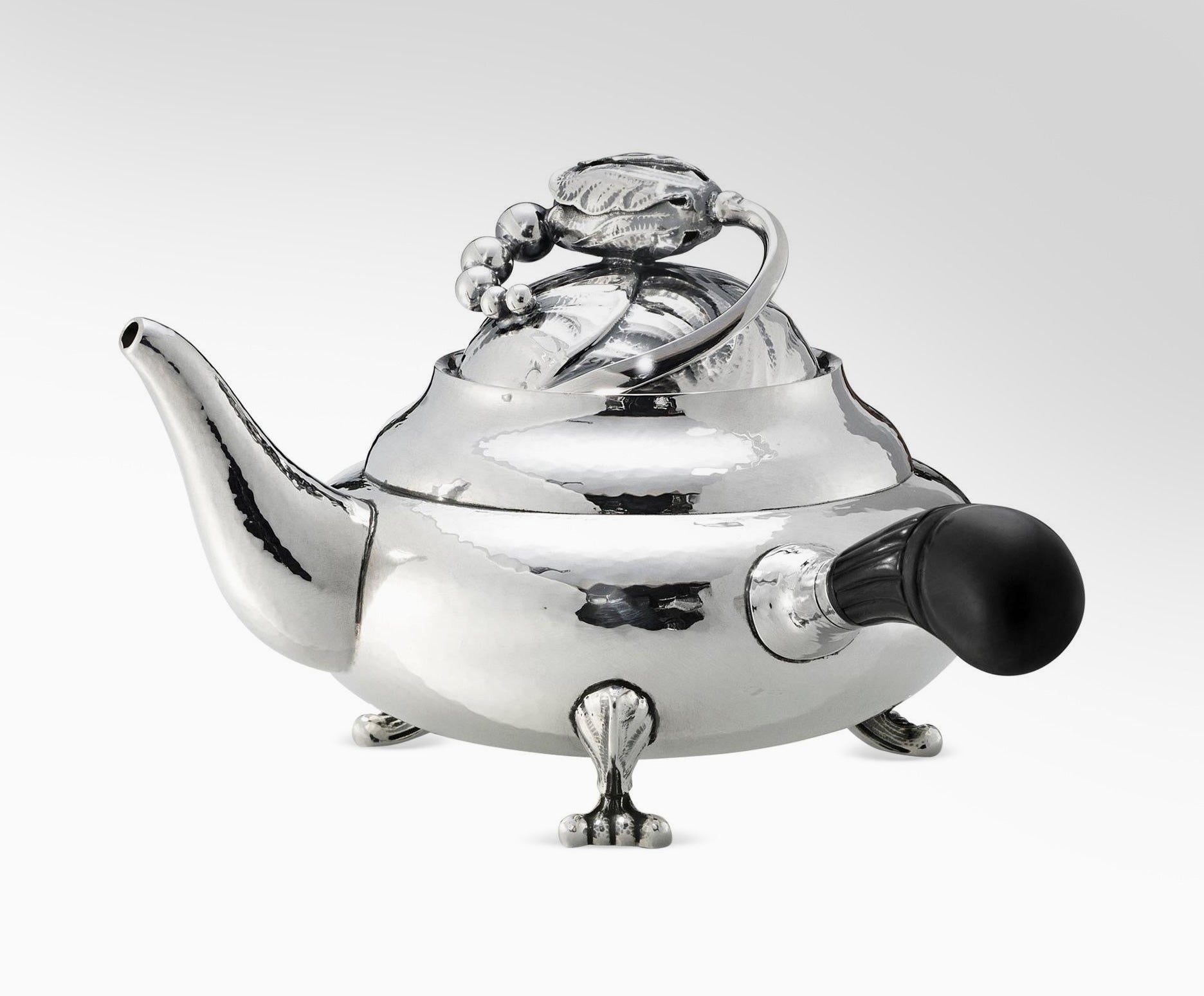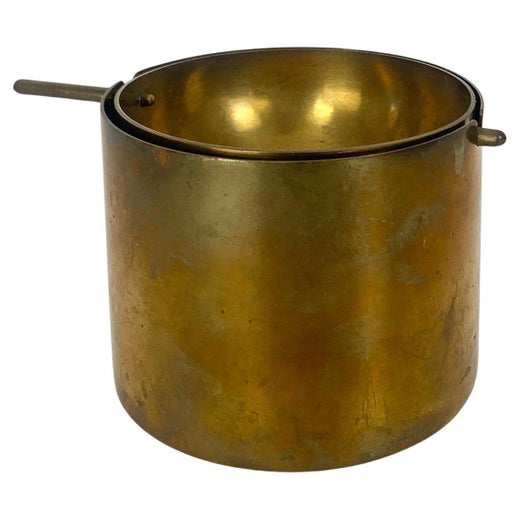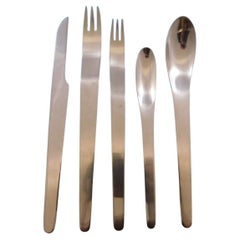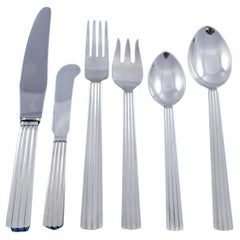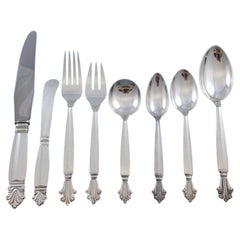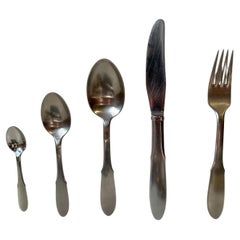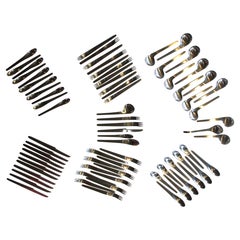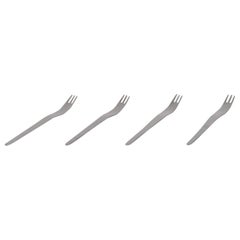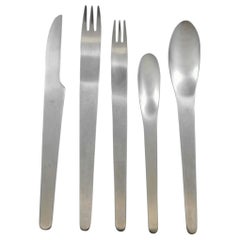
Arne Jacobsen by Georg Jensen Stainless Steel Flatware Set Service 42 Pcs Estate
View Similar Items
Arne Jacobsen by Georg Jensen Stainless Steel Flatware Set Service 42 Pcs Estate
About the Item
- Creator:Georg Jensen (Maker),Arne Jacobsen (Designer)
- Design:
- Dimensions:Height: 1 in (2.54 cm)Width: 1 in (2.54 cm)Depth: 1 in (2.54 cm)
- Sold As:Set of 40
- Materials and Techniques:
- Period:
- Date of Manufacture:1957
- Condition:
- Seller Location:Big Bend, WI
- Reference Number:1stDibs: LU1022415916272
Blossom Teapot
The very first of Danish silversmith Georg Jensen’s teapots, the Blossom teapot exemplifies the natural motifs and Japanese influence central to the Art Nouveau movement, which spread across Europe at the turn of the 20th century. Jensen (1866–1935) brought the first Blossom teapot to market in 1905, just a year after founding his eponymous silversmith workshop in Copenhagen. Before finding his calling working in silver, Jensen had trained as a sculptor and ceramicist, studying at the Royal Danish Academy of Fine Arts and going on to work as a modeler in a porcelain factory and later started his own studio. In 1901, though, the designer changed paths, embarking on an apprenticeship with Mogens Ballin, the master silversmith who also had a background as a painter.
This kind of varied artistic background may just be what set Jensen apart: His best work displays a sculptural quality and attention to artful, often ornate, detail. The Blossom teapot epitomizes this, mixing a variety of symbolic design elements for a one-of-a-kind serving piece. Squat and low-slung at just over four inches tall, the teapot stands in contrast to the more slender silhouettes of traditional models. It’s set on “toad’s feet” and topped with a magnolia — not in glorious bloom, but in the hopeful form of a young bud — a flower symbolic in Japanese culture that also acts as a handle. Such a marriage of decoration and functionality speaks to the Art Nouveau ethos of incorporating natural elements wholly into a design and not purely as decoration.
The Blossom teapot also showcases a technique that would become one of Jensen’s trademarks: delicate hammer marks across the surface of the silver, reducing its shine and lending it an organic quality that stands in contrast to the pristine reflective surface of traditional polished-to-perfection tea services.
Georg Jensen continues to manufacture the Blossom teapot today, decades after the death of its founder, with just one notable change: The original teapot featured a handle of carved ivory; bans on the sale of the material prompted a swap to ebony, whose dark hue makes a dramatic contrast to the soft glow of the silver. The Blossom teapot is made by the company’s most skilled silversmiths, who hand-hammer the body, solder the feet and magnolia bud top and attach the handle and spout to precise specification to ensure easy flow of tea. Some things no machine can imitate.
Arne Jacobsen
The eye-catching work of the Danish architect and designer Arne Jacobsen often introduces new collectors to mid-20th century furniture. With their fluid lines and sculptural presence, Jacobsen’s signature pieces — the elegant Swan chair and the cozy-yet-cutting edge Egg chair, both first presented in 1958 — are iconic representations of both the striking aesthetic of the designers of the era and their concomitant attention to practicality and comfort. Jacobsen designed furniture that had both gravitas and groove.
Though Jacobsen is a paragon of Danish modernism, his approach to design was the least “Danish” of those who are counted as his peers. The designs of Hans Wegner, Finn Juhl, Børge Mogensen and others grew out of their studies as cabinetmakers. They prized skilled craftsmanship and their primary material was carved, turned and joined wood. Jacobsen was first and foremost an architect, and while he shared his colleagues’ devotion to quality of construction, he was far more open to other materials such as metal and fiberglass.
Many of Jacobsen’s best-known pieces had their origin in architectural commissions. His molded-plywood, three-legged Ant chair (1952) was first designed for the cafeteria of a pharmaceutical company headquarters. The tall-backed Oxford chair was made for the use of dons at St. Catherine’s College, Oxford, whose Jacobsen-designed campus opened in 1962 (while still under construction). The Swan, Egg and Drop chairs and the AJ desk lamp were all created as part of Jacobsen’s plan for the SAS Royal Copenhagen Hotel, which opened in 1960. (The hotel has since been redecorated, but one guest room has been preserved with all-Jacobsen accoutrements.)
To Jacobsen’s mind, the chief merit of any design was practicality. He designed the first stainless-steel cutlery set made by the Danish silver company Georg Jensen; Jacobsen’s best-selling chair — the plywood Series 7 — was created to provide lightweight, stackable seating for modern eat-in kitchens. But as you will see from the objects on 1stDibs, style never took a backseat to function in Arne Jacobsen’s work. His work merits a place in any modern design collection.
Find authentic Arne Jacobsen chairs, tables, sofas and other furniture on 1stDibs.
More From This Seller
View All20th Century Tableware
Stainless Steel
20th Century Sterling Silver
Sterling Silver
20th Century Sterling Silver
Sterling Silver
20th Century Sterling Silver
Sterling Silver
Mid-20th Century Tableware
Sterling Silver
Mid-20th Century Tableware
Sterling Silver
You May Also Like
Vintage 1940s Danish Mid-Century Modern Tableware
Stainless Steel
Vintage 1950s Danish Tableware
Stainless Steel
Mid-20th Century Danish Mid-Century Modern Tableware
Stainless Steel
Late 20th Century Danish Scandinavian Modern Tableware
Stainless Steel
Late 20th Century Danish Scandinavian Modern Tableware
Stainless Steel
Late 20th Century Danish Scandinavian Modern Tableware
Stainless Steel
